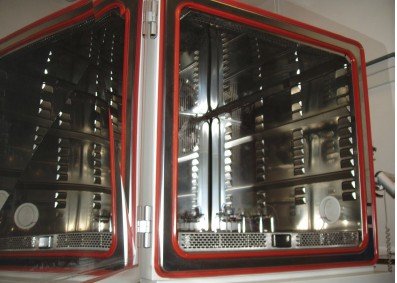Is your product really safe? How does EU legislation look at it? Everything about CE marking in one place!
This is an archive article published 06/02/2017. Some information may no longer be up to date and in line with the current state. Please contact us in case of interest.
Did you know that 80% of electronic products on EU market are not in conformity with EU legislation and standards? And 30% are even dangerous! Since we (but certainly you too) care about our components being used to produce safe and qualitatively high standard products, we have prepared serie of articles about this issue for you.
Why company should even think about this issue?
It is important to start in the foundations themselves. Business ethics and also EU Directive on general product safety say that only safe products and services can be placed on the market or into production. Products that do not pose a risk to customer’s life, health, property or environment as a whole must be in the company’s interest. That is why there is a legislative framework that defines the technical requirements for the products, which, by their nature, could jeopardize the health, safety or property of persons or the environment. And the most important fact is that the product, which has not undergone the conformity assessment process with the legislatively defined technical requirements for the product, cannot be placed on the EU market. We would summarize it into one pragmatic sentence – because marking the product with CE and ensuring its conformity to the EU legislation is a fundamental obligation before the product is placed on the EU market.Technical requirements for such products
The number of products on the market is innumerable. Therefore, we cannot make such generalization. There is a limited number of legal regulations with technical requirements. It is important to know what features my product has and where it is going to be used. In principle, we could talk about 5 - 6 EÚ directives:- 2006/42/EC (machinery - machinery)
- 2014/30/EU (electro-magnetic compatibility - EMC)
- 2014/35/EU (electrical equipment within certain voltage - LVD)
- 2014/53/EU (RadioEquipmentDirective – RED)
- 2014/34/EU (equipment used in potentially explosive atmospheres – ATEX)
- 2009/48/ES (safety of toys TOY)
What are these directions about
It is important to study them. Unfortunately, there is no other way because ignorance of the law is not an excuse… But in principle, they define basic terms, subjects, technical requirements, conformity assessment procedures, and so on. While the directive sets out the definitions, procedures and organizational requirements, the vast majority of technical requirements for the product are determined by technical norms. Technical standards which are in conformitywith European standards are called harmonized standards. Here it should be noted that the standards are just some guidance on how to produce a safe product and thus compliance with standards is voluntary. If the manufacturer does not want to respect the norm, they need to prove that the product is at least as safe as if it was manufactured according to standards. So ultimately, the easiest way to achieve product safety is to manufacture it in compliance with the norms.We can divide norms into 3 groups
- international – ISO, IEC, EHK…
- EU norms – EN STN…(CEN, CENELEC, ETSI…)
- national – each country has its own standardization system; in the EU, a majority of the standards are harmonized. However, if there are some national deviations, they need to be met when entering the national market
Who is responsible for being compliant with the legislation
It cannot be so easily said that it is a manufacturer. It is about consumers’safety. Therefore, if we generalize it, everybody who can influence the product features is responsible. Manufacturer is responsible for their product…Lately, market supervision got its hands untied by the changes in the directives. Directive talks about so-called economic subject and that is the manufacturer, authorized person, importer or distributor. And all of these subjects have their obligations specified.Many importers or distributors have their products being manufactured in China for example and then they mark this product with their brand. Careful if they do it… They consider themselves as the manufacturer of such product and thus they also have all the obligations of the manufacturer.
How does such certification look like? More about it in next article. Coming soon…
Do not miss these articles
Do you like our articles? Do not miss any of them! You do not have to worry about anything, we will arrange delivery to you.






